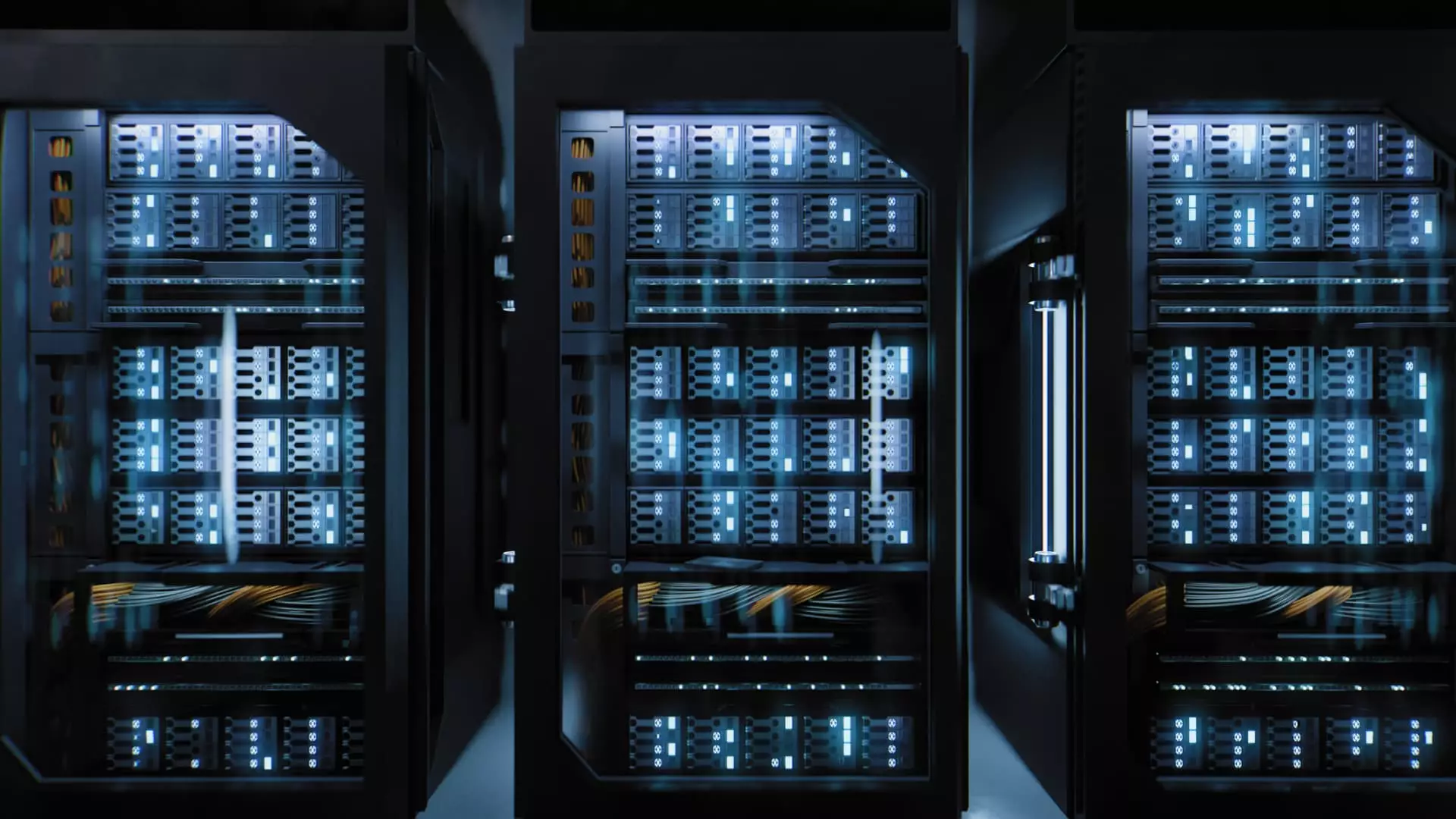As we transition into an increasingly AI-driven future, the rising demand for data centers is simultaneously prompting a re-evaluation of their environmental impact. With significant advancements in artificial intelligence (AI), particularly illustrated by the breakthroughs from companies like Nvidia, a pressing challenge has emerged: how to efficiently cool the energy-demanding systems that underpin these technologies without compromising Europe’s sustainability goals. Goldman Sachs predicts that the demand for data centers is likely to surge by 160% by 2030, a statistic that raises red flags regarding energy consumption and adherence to carbon reduction targets.
The Energy Consumption Conundrum
Data centers, often likened to the nerve centers of the digital age, are notorious for their substantial energy usage. This is particularly the case when employing high-powered chips such as graphics processing units (GPUs), essential for AI and machine learning tasks. According to estimates, a single AI deployment can consume as much as 120 kilowatts of energy per square meter, which equates to the energy needs of 15 to 25 households. The reliance on GPUs not only leads to increased energy consumption but also affects thermal management strategies. These chips generate substantial amounts of heat, leading to an urgent need for efficient cooling systems, which in turn requires cooler water for optimal functioning.
This heating issue presents a paradox: while AI seeks to revolutionize industries and enhance efficiencies, its appetite for energy threatens to undermine existing sustainability frameworks. As highlighted by Michael Winterson, chair of the European Data Center Association, if the operational standards for cooling technologies are compromised in favor of accommodating hotter chipsets, the industry may inadvertently regress to less environmentally friendly practices from decades past.
The dynamics between chip manufacturers and European data center operators has become increasingly fraught. Many companies in Europe are under pressure from U.S. chip designers to reduce cooling water temperatures, often revisiting older cooling technologies rather than relying on more efficient liquid cooling systems. This has raised concerns among European equipment suppliers, who view these developments as counterproductive not only to operational efficiency but also to the broader pursuit of decarbonization.
Moreover, energy management companies such as Schneider Electric are working closely with European Union (EU) regulators to address these complicated intersections of technology and environmental policy. The EU has established ambitious energy efficiency targets, aiming to reduce overall consumption, and any increase in demand driven by AI innovations could jeopardize these objectives. Schneider Electric’s insights on cooling processes reveal that while energy use may rise, it is paramount that the Power Usage Effectiveness (PUE)—a crucial metric for the energy efficiency of data centers—does not worsen in response to changing cooling requirements.
As data centers grapple with the new realities dictated by AI advancements and cooling technology, the approach taken by companies is varied. Some firms argue for the need to implement sophisticated cooling systems that would accommodate growing power demands while still aiming for energy efficiency. For example, companies interested in deploying Nvidia’s GPUs require water temperatures between 20 to 24 degrees Celsius, significantly lower than the traditional settings.
Conversely, there is speculation around the long-term financial feasibility of these systems, particularly as market demands increase. The investments planned for AI infrastructure reveal an eagerness to adapt and evolve, but there is still a cloud of uncertainty over the operational costs and environmental impact associated with these transitions. Nebius, with its ambitious investment strategies in AI infrastructure, indicates a broader trend of companies preparing to embrace these technological transformations while balancing the quest for profitability and sustainability.
The dual pressures of advancing technology and demanding environmental responsibilities require a delicate balance that the data center industry must navigate. As the European market grapples with the burgeoning demand for AI-driven solutions, the compatibility of these developments with sustainability guidelines becomes crucial. Stakeholders must collaborate and innovate to develop efficient cooling methodologies that do not sacrifice environmental standards for operational demands.
Ultimately, as AI continues to infiltrate various sectors, data centers will play an essential role in shaping both our digital future and ecological landscape. The challenge lies not only in adopting cutting-edge technology but also in ensuring that such advancements align with global sustainability efforts. The path forward may not be straightforward, but it is undeniably essential for the health of our environment and the sustainability of future technologies.

Leave a Reply